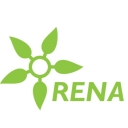EU ETS WG Study visit to Netherlands: Operating a Competent Authority
Date: 23-25.09.2014
Place: NEA, The Hague and Rotterdam Harbour, Netherlands
Organizer: ECRAN Secretariat with NEA and EC TAIEX Unit
An important element of the support provided by the ECRAN Emissions Trading Working Group are
the formulation of national and/or regional ETS roadmaps. These roadmaps will serve as a best-
practice document for the implementation of ETS modelled along the EU ETS. It will address the
steps required towards the full implementation of ETS and identify the resources and competences
needed to achieve such implementation. These roadmaps support the following implementation
steps that EU Accession candidate countries need to take in the framework of their accession:
1. Approximate, as far as possible, the legal and institutional requirements and take the
preparatory steps towards the full implementation of the EU ETS Directive. This includes
ensuring the necessary capacity building, informing stakeholders of the legal implications of the
EU ETS Directive, and agreeing on a time-plan for implementation.
2. Implementing a system for the monitoring and reporting of greenhouse gas emissions, and for
the verification of annual emission reports.
3. Consider establishing an accurate accounting system (“registry”) for all allowances issued under
their ETS. Considerations include joint operation of registry with other (candidate) countries and
the future inclusion in the Union Registry.
4. Decide upon the method for allocation, in due understanding of the EU ETS Benchmarking
Decision, carbon leakage list, and the approaches towards auctioning of allowances.
5. Identification of participating installations and preparation of consultation and capacity building
to these future participants, if a candidate country’s accession is due before the end of the third
trading period, the year 2020.
Aim of the meeting
Wider Objective:
Strengthening the understanding of the institutional and procedural arrangements
identified when setting up an ETS Competent Authority, illustrating the lessons learned and
organisational choices made.
Specific Objectives:
Exchanging information on tools and systems used for the various tasks to be conducted by
the ETS Competent Authority, and obtaining practical insights on use of these tools.
Supporting beneficiary countries in providing options for developing their action plans for
the implementation of the ETS, including identification of choices to be made and priorities
to be set.
Stimulating exchange of information and best practices in the implementation of the ETS
within the region, and between the EU Competent Authorities and their counterparts in the
beneficiary countries.
Expected Results of the meeting
Improved understanding of the details of the Monitoring and Reporting (MR) regulation as
well as of the Accreditation and Verification (A&V) regulation of the European Commission.
Insight in the approaches and experiences in the implementation of both regulations in EU
Member States and candidate countries.
Better understanding of the required human and institutional resources for the
implementation of the two regulations as part of an ETS system conform the EU ETS
requirements.
Insights in the lessons learned, the risks involved and the bottlenecks of ETS
implementation.
Workshop documents are available for download from the download section. Additional
presentation of the host of the study visit can be found at:
http://prezi.com/pimm8xmxdaen/?utm_campaign=share&utm_medium=copy&rc=ex0share

